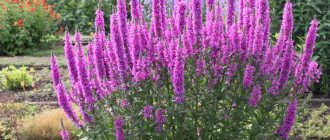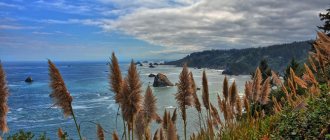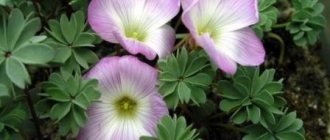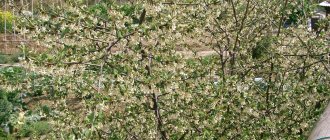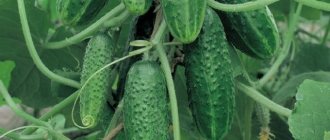The flowering plant Borago, also called borage, or borage, or borage, is a member of the Borage family. This genus includes 5 species. Only one species is cultivated by gardeners, called borage (Borago officinalis), which is a herbaceous annual. In nature, it grows as a weed and is found in Asia Minor, Siberia and Europe. For a long time, borage has been known to mankind as a plant that produces pollen and light honey. Once upon a time, the greens of this plant were used as a blue dye for woolen fabrics. This crop is called borage due to its smell, which is very similar to the aroma of fresh cucumbers.
Description
Borage (Borage) is an amazing plant that has a rich cucumber aroma.
This is where the grass got its name. Currently, all parts of the plant are used for a variety of purposes in both cooking and medicine. The culture is known for its beneficial effects on the cardiovascular system. Previously, borage was popular in American and English cuisines, but today the plant is ubiquitous. From this article you will learn what borage is, why this plant is so useful, and also how to use it correctly at home. It is worth knowing that comfrey and borage are different plants, but they are often confused for their similar appearance. If desired, you can easily grow the plant at home. Of course, you need to adhere to a number of requirements (more on them below) and provide good care. The plant will feel comfortable in almost any case, even with rare watering. This is one of its significant advantages.
Collection and storage
The herb, flowers and seeds of borage are used for medicinal purposes. The leaves can be harvested during flowering: they are cut into thin strips, laid out in one layer on cloth or paper and dried in the shade in the air or in a room with good ventilation. When using a dryer, set the temperature to no higher than 40˚C.
Collected borage flowers are poured with sugar syrup or honey and stored in the refrigerator, but you can dry and store them like leaves.
Borage seeds are harvested when the fruits turn brown. They are laid out in one layer on paper or cloth, ripened and dried under the same conditions as borage grass or flowers. Dry fruits are threshed.
- How to Refresh and Replace Worn Garden Soil
How to grow amaranth and how to use it
Store borage raw materials in a dry and cool place for no more than a year.
Appearance and description of borage
The appearance and description of borage will be useful to know for those who plan to grow borage at home or simply use it for food. The plant belongs to the borage family. © https://ydoo.info/product/ogurechnaya-trava-borago.htmlBorage is biennial, but in gardening it is cultivated as an annual herb, which usually grows up to 50 centimeters in height. But sometimes borage can grow one meter in height (this is determined by the growing conditions and variety).
The plant has strongly drooping leaves, close to an oval in shape. The leaves vary slightly depending on the location. In particular, the leaves are oval at the roots, more elongated on the stem, and slightly obtuse at the top. Borago inflorescences are small in size and blue in color with pink splashes (see photo). Each flower has five sepals, and the plant has thyroid-paniculate inflorescences of several flowers. The stem is straight and slightly branched. At the same time, there are hard “hairs” on it, and there are hairs on the leaves of borage. The root system of borage has a taproot type with branched lateral roots.
The fruits of the plant are small and ribbed nuts that are brown in color. On average, each such fruit contains about one thousand seeds. As they ripen, they spill out onto the ground. By the way, the plant actively blooms from June to August, and fruit ripening is observed from July to September. Now you know what borage looks like
Where can you find borage? Syria is called his homeland. But now the plant is widespread in Asia Minor, Northern Africa, South America and Southern Europe. But in most countries this plant is considered a simple weed.
Diseases and pests
Borago is practically not affected by any diseases or pests. This makes caring for her much easier. Only in rare cases can it be attacked by burdock caterpillars and aphids.
If you can remove caterpillars with your own hands, then to eliminate aphids you will need to purchase chemicals, for example, Inta-Vir. You can also try to fight the pest with unconventional methods, for example, infusions based on tobacco, garlic, ash, onions, and potato tops.
Inta-vir
How to grow at home?
How to grow borage at home? It's not as difficult as it might seem at first glance. The main advantages are low maintenance, resistance to drought, and a high probability of germination (approximately 98% of 100% of cases). By the way, many people wonder how to get rid of a plant on their site, considering it a weed. And in vain. The product can be used for food. Borago is also often planted with other vegetable crops (in particular, potatoes) to protect the latter from diseases and pests.
Before you familiarize yourself with the basic requirements for growing a plant, it is worth knowing some features, namely:
- Borago can be planted at any time of the year.
- Borage ripens all year round, especially if placed in a greenhouse.
- It is enough to plant the plant to a depth of 3-5 centimeters.
- It is advisable to place the plant in partial shade or sun. Borago is not very fond of strong shade.
- The yield from each borage bush is quite impressive, namely: up to 1 kg/cubic meter per year.
- The ripening period for borage is 30-40 days, which is quite fast compared to other plants.
If you want borage to taste great, it still needs to be properly cared for. To do this, you should water the plant, especially during periods of drought, and loosen and fertilize the soil from time to time.
To plant a plant, you need to prepare seeds, which are sown in prepared holes up to 3 cm deep. The beds can be placed every 40-45 centimeters. Sometimes the seedlings turn out to be very dense. And then they need to be thinned out so that there are no more than fifteen plants left for each meter of bed. This is the optimal amount for comfortable growth.
If you want borage to emerge early, it should be planted in pots on the windowsill at the end of March. And then the plant is transplanted into the soil as soon as 3-4 leaves grow on the cucumber grass. It is necessary to plant under film. To obtain a late harvest, the plant, on the contrary, is planted at the end of summer. No agricultural technology is required for planting, which is important for anyone who plans to grow this plant from seeds for medicinal or culinary preparations.
The plant reproduces well by self-sowing. If you planted it once, then next spring there is a high probability that new plants will grow from the fallen seeds.
A huge advantage of the plant is its resistance to almost any disease, as well as pests. This allows borage to grow quietly and delight the owner.
By the way, there are several varieties of plants that are somewhat different from each other. The most common varieties for growing at home are:
- Okroshka. This variety is used more as a garden decoration, but can also be added to salads. The plant reaches a meter in height, is distinguished by a highly branched and straight stem, dense and large leaves, and a rich cucumber smell. The first harvest can be harvested in a month and a half.
- April. The plant can reach one meter in height. It is distinguished by a strong and branching stem, on which you can see a small fluff. The leaves of the plant are large and oval, they are not very wrinkled, with small hairs. The leaves have a rich green tint. The flowers of this variety are blue with splashes of pink. The variety is considered productive, and the weight of each plant is 100 grams.
- Vladykinskoe Semko. It is distinguished by a branched stem and a spreading rosette of leaves. The leaves themselves are oval-shaped and quite large in size, with a rich aroma of fresh cucumber. The flowers of the plant are quite large and have a blue tint.
- Dwarf. A distinctive feature is that the period from germination to harvest does not exceed 38-45 days. The rosette of leaves is erect, it can reach up to 30 centimeters in height and have up to 25 leaflets. The flowers have a blue tint. On average, one plant weighs about 200 grams.
- Brook. This plant can be harvested 40-50 days after planting. The variety is quite spreading and has intensive branching. The rosette of leaves has a diameter of up to 20 centimeters, a horizontal orientation and a height of up to 40 centimeters. All leaves are slightly wrinkled and medium in size. These are small plants, each weighing about 100 grams.
Borage should be collected when the first green shoots appear. They are the most useful. Do not wait until the plant blooms before consuming it. The appearance of flowers will cause coarse hairs to appear on the plant, and the leaves themselves will become denser. The collected herb should be consumed immediately; it cannot be stored for long periods of time. But keep in mind that in the absence of proper care there is no point in collecting, as the plant will be tasteless.
Plant species
Borago comes in several varieties. The following varieties are ideal for growing in garden conditions.
"Vladykino semko"
Lush shrub growing in the form of a panicle. It reaches a height of 50 cm. The stems are straight and branched. The leaves are elliptical in shape, large in size, and very drooping. The flowers are blue and large. The plant ripens quickly.
"April"
This variety can grow up to a meter long. The bush turns out to be spreading and has powerful stems. Borago leaves are oval shaped. The flowers are also blue, but have a pinkish tint.
This type is well suited for preparing culinary masterpieces.
"Vitaminka"
The variety has good resistance to low temperatures. Grows up to 0.7 m in height. The stems are strong and branched. The leaves are large and emit a rather strong odor.
The species is characterized by good productivity and rapid ripening.
"Vladykino semko"
"April"
"Vitaminka"
"Dwarf"
This borage variety is characterized by high resistance to changes in air temperature. It reaches a height of 0.6 m. The bush is spreading and has a thick stem. The flowers are large in size, blue in color and have a faint scent.
The maturation process occurs quickly.
"Okroshka"
The bush grows up to 0.7 m. It is distinguished by its early ripening, the harvest can be harvested already 20 days after the appearance of the first shoots. The leaves are collected in a rosette, slightly raised.
"Stream"
This variety is distinguished by its small growth - maximum 40 cm. The bush has medium-sized leaves that are slightly wrinkled. The plant is lush, the flowers are small and have a blue tint. The grass matures quickly.
"Dwarf"
"Okroshka"
"Stream"
Useful properties and composition
It is imperative to know the beneficial properties and composition of cucumber herb, finding out the features before using it. The composition of the product is represented by useful components. The enormous value of the plant lies in the ability to obtain oil from the seeds. It is rich in gamma-linolenic acid (omega-6) in an amount of about 20%-27%. The composition contains alpha-linolenic acid (omega-3) in an amount of about 10%. We can conclude that the chemical composition of borage is quite impressive. This suggests that the benefits of the plant are indeed determined, both in medicine and in cooking.
The plant has a huge number of beneficial properties, which include:
- People suffering from disorders of the gastrointestinal tract are recommended to take infusions and decoctions of the plant due to the significant content of tannins in the composition.
- The herb provides laxative, diuretic and diaphoretic effects.
- The plant is rich in fatty acids, which leads to the fact that borage is famous for its pronounced anti-inflammatory effect.
- This plant is used to create delicious teas and healthy infusions that have a calming effect. Such teas will be recommended for those who suffer from depressive moods, sleep problems or nervousness.
- The plant has an expectorant effect due to the significant content of saponins as components.
- Preparations with borage as a base are recommended for people suffering from vascular diseases and hypertension.
- The herb is famous for its mild analgesic effect.
- Borago has an anti-inflammatory effect, due to which the plant is used in the treatment of colds.
- The herb, when used regularly, will help get rid of swelling.
- Borage oil can also be used by those diagnosed with diabetes and obesity.
- For allergic rashes, neurodermatitis and some other skin problems, borage will be useful.
- The herb has an activating effect on metabolic processes.
- The herb is often used in the treatment of gout.
Borago is a plant that, when used correctly, can improve the health of the body. It is important to take the product with caution. You will find out below what contraindications the product has.
By the way, the nutritional value of borage is such that per 100 grams of product there are 3.06 grams of carbohydrates, 1.8 grams of proteins, and no fat at all. The calorie content of the product is only 21 kcal. The main value of borage lies in its flowers, which are rich in oils (essential). 100 grams of borage contain 88% of the daily value of vitamin A, 10% calcium, 54% vitamin C and 20% iron.
Precautionary measures
The benefits and harms of borage have been well studied; it has much more positive aspects. This plant can be used as a remedy for a course of no longer than 3 weeks. Large concentrations of this plant overload the liver. Also, pregnant and lactating women can use infusions and decoctions of borage only with the permission of a doctor, although this herb is believed to improve lactation.
It is also better for people with stomach and intestinal diseases to consult a doctor before using borage dishes and remedies. This is where the contraindications for Borage end; it is given even to children in small portions.
Application of borage oil and juice
The use of borage oil and juice has long been common. They are obtained from the seeds of cucumber grass. The product is known for its significant content of fatty acids (linoleic and linolenic), vitamins A, E, F. As a result, borage oil can have a beneficial effect on the skin, helping to increase its protective functions, additional hydration and increase elasticity. The oil is actively used in cosmetology, especially for creating face masks.
In pharmacies the oil can be bought in capsules and bottles. Both options are suitable for use. You can also make an analogue of the oil at home. To do this, the seeds are crushed, after which they need to be consumed half a coffee spoon before each meal, that is, three times a day. Taking borage oil (or crushed seeds) is especially effective in treating acne, rashes, eczema, rashes of any nature and inflammation.
The juice is made from the leaves and flowers of the plant. It will be especially useful for fever, problems with the genitourinary system, edema, and infectious diseases of any type. Regular use of juice is an opportunity to reduce increased excitability of the nervous system, get rid of feelings of depression and groundless fears, and also eliminate sleep problems, including insomnia.
To make cucumber juice at home, we recommend following the following algorithm:
- take the lower leaves of borage;
- rinse them under cold water;
- pour boiling water over the grass;
- pass the leaves through a meat grinder;
- squeeze the plant parts well;
- add water or whey to the finished composition so that the final proportion of the two components is 1 to 1;
- wait until it boils over medium heat and cook the resulting mixture for three minutes.
It is recommended to consume borage juice before each meal (that is, three to four times a day), three tablespoons. The result will not be long in coming.
Contraindications for borage
It should be remembered that when using any medicinal herbs, there are contraindications and possible undesirable consequences. The seasoning is not recommended for use:
- for allergies, individual intolerance;
- chronic diseases of internal organs;
- tendency to epilepsy;
- serious mental disorders;
- treatment with other strong drugs.
Even in the absence of contraindications, the herb should not be consumed in large quantities. Abuse of the seasoning can lead to problems with the kidneys, liver, and yellow skin.
You need to wear gloves when collecting leaves, because the hard fibers running along the shoot can cause irritation and itchy skin.
Medicinal uses of borage
The use of cucumber in medicine is an opportunity to improve your own body and get rid of specific problems. The plant, depending on specific purposes, will be useful fresh, frozen, dried or dried.
The healing properties suggest the following:
- Reduced temperature, decreased blood pressure. To do this you need to use flower tea. Pour a teaspoon of flowers or one tablespoon of dried stems with a glass of boiling water. The same composition will help increase lactation.
- Diaphoretic, diuretic and laxative effects. This is true for young shoots.
- Toning and calming effect. It is characteristic of a decoction of the plant.
- Beneficial effects on joints, blood vessels, intestines, liver, heart. These are the main properties of a fresh plant. It can also speed up metabolism.
- Reduced sweating. To do this, you will need to make a decoction of cucumber and strawberry leaves (they are taken in equal quantities). The resulting liquid should be used instead of ordinary tea.
- Acceleration of healing of abrasions, wounds, ulcers and burns. You will need a decoction of dried leaves (a handful) and 0.5 liters of boiling water. The composition must be infused for fifteen minutes.
The plant is also often used for weight loss. You will need plant juice, which is recommended to drink twice a day. You can also combine the drink with celery juice to enhance the positive qualities and more actively fight excess weight.
Landing
When planting, you should remember that the crop is surprisingly viable, so starting it on your site will not be a problem.
When to start
Borage is a cold-resistant plant, so sowing begins after the snow has melted and the top layer of soil has warmed up to 8-10ºC. This usually happens in April, and in the temperate zone - in May. Sometimes they use planting before winter, then you need to ensure that the ground is not frozen, but at the same time there is no significant warming and the sprouts do not have time to start growing.
If young greens are needed all summer, then sowing is carried out using the conveyor method every 18-20 days.
For those who want to receive young greenery ahead of schedule, March planting is recommended. But in this case, the beds are covered with film or agrofibre, under which heat is retained sufficient for the normal development of seedlings. After the outside temperature rises above 15ºC, the shelter can be removed.
Place
An unpretentious plant can grow successfully both in areas with plenty of light and in shade. It can be planted at the foot of trees or near a high wall or fence, without worrying that there will not be enough sunlight.
The crop develops best when its predecessor on the site was tomatoes, legumes or potatoes. Planting borage is often done next to potato plots, since borage essential oils repel Colorado potato beetles during flowering, preventing potato plantings from eating the green mass.
The soil
The ideal option is soil that is rich in organic matter, but at the same time has excellent permeability and looseness. Borago can grow in poor soil, but flowering will not be long and abundant, and the size of the plant and the richness of the foliage will be inferior.
Before planting, you should check the acidity of the soil. Normal values are pH 5-6 or 6.5-7, that is, neutral or acidic earth. When alkalizing, you should prepare the soil by first adding a large amount of high-moor peat at the rate of a bucket per m2.
The future planting site is dug up in advance, introducing cow manure or turf soil into the ground, as well as ammonium nitrate for the normal development of green mass. The digging depth should be about 40 cm, since the root system of the crop develops deeper.
Sowing
Rows are marked on the site at a distance of 25-40 cm from each other. They should not be placed closer, as crowded spaces have a negative impact on flowering. Seeds are sown at intervals of 9-10 cm to a depth of 2 cm. After planting, the beds are watered abundantly: this will reduce the time before the first seedlings appear. It is good if the soil on top is mulched with high-moor peat or other mulching material of organic origin (sawdust, husks, etc.), since the additional layer will retain moisture inside the soil, warm it up faster and prevent the dispersal of weeds.
If the weather is warm enough, the first seedlings will appear by the end of the second week. Shoots most often appear together. After three or four leaves grow on the sprouts, they can be thinned out, leaving an interval of 15-20 cm. If the purpose of planting is to produce flowers, then thinning will need to be done one more time, leaving 40-60 cm between neighboring plants.
Growing
Caring for borage is quite simple and does not require much time. The main measures include proper watering, loosening the soil and fertilizing.
Watering
In the wild, borage is considered a drought-resistant crop, but in order to produce tasty, juicy and soft greens, it needs sufficient moisture. During the first month of cultivation, it is watered once a week in the absence of natural precipitation. It is important to pay attention that after watering there is no stagnation of water in the beds, because this has a detrimental effect on the root system of borage.
In the second half of the growing season, when the leaves are no longer collected for food, the need for watering disappears and moisture is limited to natural precipitation.
Feeding
In order to get a good harvest, borage requires periodic fertilizing. Fertilizers are applied twice:
- After the first thinning of the seedlings, a solution of ammonium nitrate or urea is added in a ratio of one teaspoon per bucket of water. The application rate is 0.5 liters per plant. Instead of chemical fertilizers, you can use a solution of chicken manure infusion.
- After three weeks, fertilize again, but with an organic solution. To do this, prepare an infusion of mullein in water in a ratio of 1:5, which must be infused for one week in a warm place.
Weeding
Weeding is needed in the first half of the growing season. Both row spacing and the space between neighboring plants are cultivated. This will facilitate air access to the roots and prevent the formation of a crust on the soil. In parallel with loosening, weeds are removed that can inhibit the growth of cucumber grass.
After the borage bushes grow, loosening is no longer necessary. After the seeds ripen, they scatter, and young seedlings have to be weeded out in adjacent areas, since the crop quickly takes over territory, spreading throughout the garden or vegetable garden by self-sowing.
This crop is practically not affected by diseases and parasites, so there are no problems with its cultivation.
Use in cooking
Borago is used in cooking in different countries of the world. Often borage is grown as an ordinary vegetable crop. The use of young grass shoots is especially in demand. They have a light and slightly refreshing taste that is similar to cucumber and onion. That is why borage is an indispensable ingredient in salads, cold and pureed soups, sauces and meat dishes.
For salads, young borago leaves are used, which are picked before the plant begins to bloom. Foods turn out delicious if borage is combined with other green vegetables, including celery or cabbage. The seven-lobed leaves, which have the most delicate taste, are in particular demand. Mature leaves can also be eaten, but as they grow they become coarser and become covered with stiff hairs.
The salad will be very tasty and incredibly easy to prepare, the recipe for which is as follows: from 100 grams of cucumber leaves, 40 grams of green onions and one boiled potato. And you can top the dish with sour cream.
In autumn, borage roots begin to be eaten. They become components of sour cream, cheeses, cottage cheese and butter. The roots are also added to essences, wines, punches, syrups, vinegars, tinctures and a number of other drinks. The latter acquire an amazing taste, some piquancy and become healthier.
Borage (all parts) can be added to minced meat, minced meat or fried fish as a seasoning. This will give the dish a more piquant taste. You can also serve the shoots of the plant as an independent side dish. To do this, they are pre-sautéed or blanched, depending on the taste preferences of the household.
Season dishes with borage (leaves or flowers) immediately before serving. In this case, borage will not lose its incredible aroma.
The flowers of the plant can be eaten on their own in fresh, dried, or candied form. The latter are very popular in Western countries. And you can do them using this algorithm:
- sterilize the jars;
- place cucumber flowers in containers;
- sprinkle them with fine granulated sugar (powdered sugar will also work);
- close the jar tightly;
- send the jar to a cool place for 15-20 days;
- shake the container regularly;
- after three weeks, place the jar in the refrigerator and use the flowers for culinary purposes.
Borago flowers are often used for drinks, which are quite beautiful frozen in ice. The result is a spectacular decor that complements cocktails. You can also use borage inflorescences to decorate other dishes, confectionery masterpieces and ordinary salads.
Borage makes excellent honey. It has a light color and amazing taste. That is why experienced beekeepers often plant entire plantations of borage to obtain the desired dessert, because they know that borage is an excellent honey plant.
By the way, at home, borage can make excellent lemonade with a refreshing taste. It is not difficult to prepare; you can follow this technology:
- take a handful of borago leaves (fresh);
- add mint leaves to them (can be replaced with parsley or lemon balm);
- grind the borage parts using a blender;
- put the cut and peeled lemon there;
- fill the composition with a couple of glasses of cold water;
- add a tablespoon of your favorite syrup (stevia, agave or maple syrup are great);
- Pour the lemonade into glasses and garnish with ice and borage flowers.
Growing borage in the garden
Landing rules
It is very easy to grow borage on your own plot
It is a fast-growing plant, has high winter hardiness and reproduces well by self-sowing, which is very important to take into account, since once it is planted, it is extremely difficult to get rid of it later. Even a novice gardener or gardener can easily cope with planting and growing such a plant on his own plot.
Sowing of seeds is carried out at the beginning of spring or before winter. However, if you grow such grass not to collect medicinal raw materials, but to obtain tender greens, then you can sow it throughout the entire summer period once every 14 days. This grass grows well in loose, nutritious, well-moistened soil, which should be neutral. Before sowing, the area is prepared by removing all weeds from it, and then digging it up, while organic fertilizers should be added to the soil (per 1 square meter from 5 to 6 kilograms). The seeds are buried in the soil by 10–20 mm, while the row spacing should be from 0.4 to 0.45 m. After the seedlings appear, they must be thinned out, taking into account that the distance between the bushes should be from 15 to 20 centimeters .
Caring for borage
Caring for borage is very simple; it only needs to be watered during a prolonged drought, and if necessary, weeds are removed from the area, and the surface of the soil between the rows is also systematically loosened. If this grass is cultivated as an ornamental plant, then for longer flowering it is necessary to cut off all faded stems and remove faded flowers. If borage grows on poor soil, then it is recommended to add a liquid solution of universal mineral fertilizer to it. The duration of the growing season is 70–80 days.
Chemical composition
What borage is and what benefits it brings to humans is easier to understand if you study its composition. The plant contains:
- ascorbic, malic, succinic, resinous, linoleic, citric acids;
- tannins;
- carotene;
- flavonoids;
- essential oils;
- slime;
- oleic, stearic, eicosenoic, palmitic fatty acids;
- saponins;
- iron;
- potassium;
- calcium;
- magnesium.
Flowers contain the most essential oils and mucus, and borage grains are rich in fatty acids. Caloric content of 100 grams of raw materials is 21 kcal. This amount of grass contains about 3% carbohydrates, proteins - 1.8%, fats - 0%.
Medicinal use
Borage has been used medicinally since ancient times, but not all traditional medicinal uses have been supported by medical research. The active ingredient in borage oil is gamma-linolenic acid (GLA), which, when transformed by the body into a hormone-like substance, has a number of therapeutic effects. These include anti-inflammatory properties, thinning of blood vessels and vasodilation. In fact, borage has the highest amount of GLA of any plant.
Since ancient times, borage has been referred to as a mood-elevating herb, but major benefits have been found in the treatment of rheumatoid arthritis, lung function, as well as for promoting the growth of premature babies and topical use in treating the skin conditions eczema-dermatitis. The leaves have a moderate diuretic function. Borage is also used to treat fevers, diabetes, PMS and as a general detoxifier for the body.
Useful qualities
The beneficial properties of borage (borage, a photo of which you can see in the article) have been studied since ancient times. The essential fatty acids present in the plant are of great importance. The human body needs them to maintain vitality and healthy skin.
If these substances are lacking in the body, mood may suddenly drop, immunity may weaken, inflammation of organs and weakening of the heart may develop. Essential fatty acids are responsible for the condition of nails and hair. They are especially necessary for children.
Potassium found in the plant facilitates the removal of water from the body, and with it toxic compounds. Freshly squeezed borage juice can consist of a third of potassium, but dried leaves contain only 3 percent. Choline has a beneficial effect on the glands that produce sweat, which helps regulate the body's thermoregulation. Therefore, the plant is used for coughs, colds and fever. Nicotinic acid has a calming effect on the body, removes anxiety and nervousness.
Residents of Western countries habitually eat young borage leaves, adding them to various dishes. Fresh flowers are placed in glasses with drinks or wine, and the candied inflorescences are eaten for dessert. The formed leaves can be stewed and used in marinades and pickles. Borage inflorescences are used industrially in the production of confectionery products and cognac.
A note for florists about borage
Beekeepers often know about borage as an excellent honey plant. Since from 1 hectare of borage plantings up to 200 kg of a transparent, aromatic product is collected. Borago is also a source of bee bread, which is quite valuable. It is curious that insects that collect nectar and pollinate flowers fly to the cucumber grass, even if the weather is cold and cloudy. At the same time, the bees begin to pollinate those garden crops and flowers that are located next to the borage thickets.
Since borage is very rarely attacked by harmful insects, experienced gardeners plant it next to potatoes and tomatoes to repel not only Colorado potato beetles, but also other garden pests. Typically, planting protection reaches 95%.
Interestingly, the entire above-ground part (stems and leaves) of borage has been used since ancient times for dyeing woolen fabrics, and the material took on a rich blue color. Borage was used in Western European lands as a vegetable plant, since the young foliage has the smell of cucumbers and resembles their freshness, and an onion flavor appears. Fresh leaf blades can also be used in culinary dishes, and the flowers can be used both fresh and candied.
Even the healers of Ancient Rome and medieval Europe knew about the properties of the plant and did not ignore the foliage and flowers of borage. They were thrown into wine, which was given to soldiers before battle to give them courage, and to people suffering from sadness and melancholy during the feast. Today it has been proven that borage has a mild laxative effect, has diuretic, diaphoretic and enveloping properties; drugs have been made on its basis for rheumatism and gout, skin problems, and also as a sedative.
However, there are also contraindications for the use of borage. Among which are pregnancy, intolerance to this plant, chronic cholecystitis and manifestations of bleeding. Also, constant use of borage-based medications can affect liver function.
